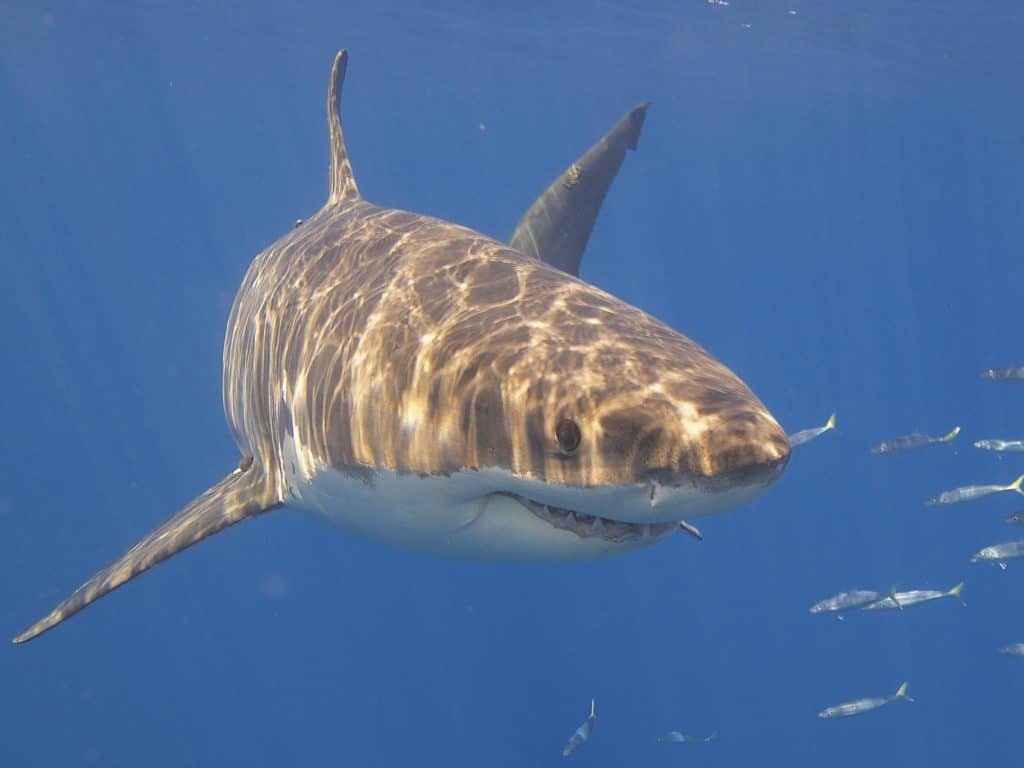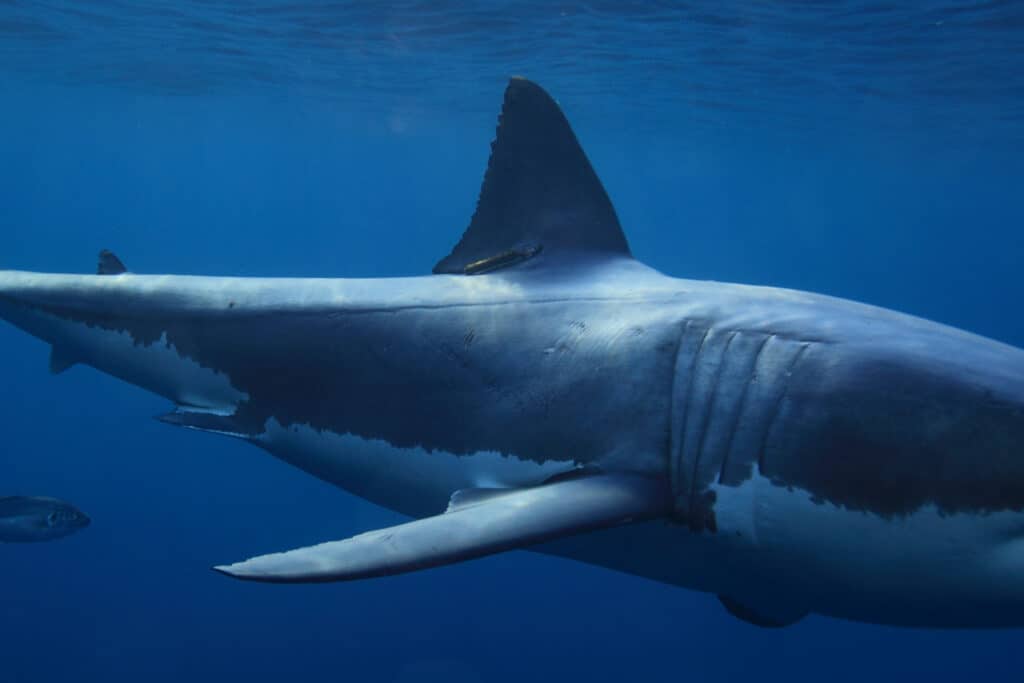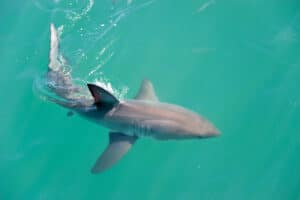Rose seems to love the warm waters of the Florida Keys. This 10-foot great white shark (Carcharodon carcharias) keeps showing up there.
If you’re wondering how a shark receives a name like Rose, it was SeaWorld in conjunction with OCEARCH that chose it. The shark was named after Rose Bay, a short distance from where the female juvenile great white shark was tagged in Nova Scotia, Canada, on October 4, 2020.
OCEARCH is a non-profit organization that studies and protects the sharks of the world’s oceans, including the great white shark. These apex predators keep the ecosystem in balance and are critical to the present and future health of the seas. In pursuit of their mission, OCEARCH tags and tracks sharks all over the globe, including many off the eastern coast of North America. And, yes, Rose is quite the traveler!

OCEARCH tracks sharks all over the globe.
©Elias Levy / Flickr – Original
This Shark’s Adventures in the Florida Keys
Rose has shown a willingness to venture well past the southern tip of Florida. On February 8, 2023, researchers located Rose not once, or even twice, but three separate times. All of the transmissions received by researchers came within a span of less than three hours. Rose was patrolling very close to Ballast Key. This is the southernmost island in the Florida Keys. It is also the most southern point of the continental United States.
Rose’s most recent ping was on February 23, 2023. It shows that she has moved off the coast and into the Gulf of Mexico. Interestingly, Rose has shown a willingness to venture much further into the Gulf than most of the other east coast sharks tracked by OCEARCH. Her furthest westward jaunt on record was in March 2022 when she approached the Florida Panhandle and Alabama border.
But, make no mistake about it. Even though Rose seems to enjoy the warm Gulf waters during February and March, this shark’s primary hunting grounds remain along the eastern seaboard of the United States. She will certainly be passing through the Florida Keys again soon on her way back.

Rose was recently pinged off the coast of Ballast Key, the most southern point in the contiguous 48 states.
©iStock.com/ovidiuhrubaru
Where Was Rose, the Great White Shark Located on a Map?
Rose was pinged swimming along the Florida panhandle and the Alabama gulf coast during her most westward trip to the Gulf of Mexico.
How To Track Sharks?
The small tag which OCEARCH places on a shark contains a transmitter. This allows researchers to keep track of the shark’s movement and behavior.
In order to accurately locate a shark, that shark must come to the water’s surface and cruise there for a minimum of 90 seconds. This allows three pings to be sent from the transmitter. These three pings enable researchers to pinpoint the shark’s location. If the shark does not remain at the surface for the full minute and a half, a Z-ping may be received. A Z-ping shows that the shark surfaced, but it does not provide enough data for accurate geolocation.

Researchers place a small transmitter near the shark’s dorsal fin to track it.
©Alessandro De Maddalena/Shutterstock.com
The photo featured at the top of this post is © Alexius Sutandio/Shutterstock.com
Thank you for reading! Have some feedback for us? Contact the AZ Animals editorial team.







